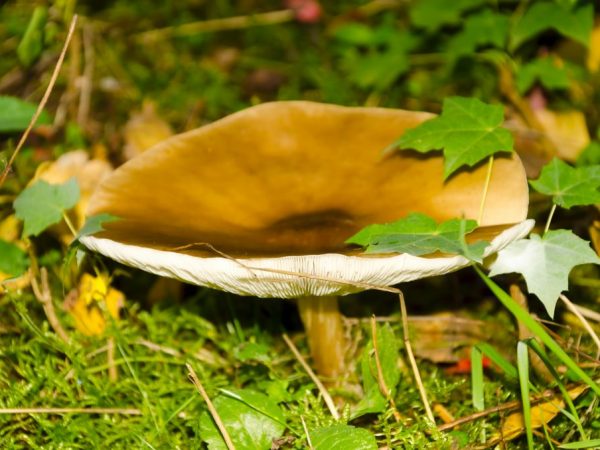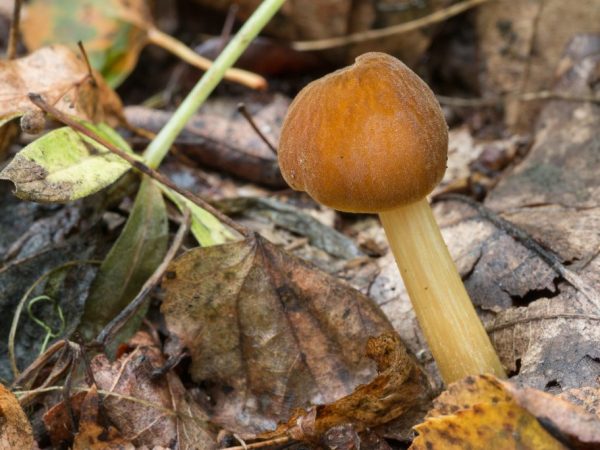Mushrooms in May
Most mushroom pickers prefer to go on a "quiet hunt" in late summer or autumn. It is at this time that the greatest number of edible mushrooms is found in the forest. However, some of their species begin to bear fruit in the spring. Edible mushrooms are rare in May, but this makes the "quiet hunt" even more interesting and, if I may say so, more exciting.

Mushrooms in May
May mushroom
May mushroom, also known as calocybe May, is unpretentious to climatic conditions and soil type. It can be found both in coniferous and deciduous forests. The main collection time is April, May. In summer, mycelium rarely forms mushroom bodies, but sometimes it occurs in July.
The lamellar cap, which is painted white, at first has a flat-rounded shape, and gradually becomes flat as it grows. The color of the frequent plates is white. The diameter of the mushroom cap does not exceed 10 cm. In dry weather, small superficial cracks appear on it. The hat is located on a short and thick leg, also painted white. Scales and skirt are absent. The height of the fungus does not exceed 7-8 cm. It prefers to grow on forest edges and meadows.
Those who collected the mushroom claim that it has a strong flour smell and taste. May mushroom is valued not so much for its taste as for its beneficial properties. It contains a huge amount of vitamins and amino acids, the content of animal and plant proteins is balanced. It also contains a large amount of minerals.
Inedible double - white ryadovka. It has an unpleasant odor, which is its main difference from the May mushroom.
Tinder
Polypores are a whole class of specialized woody parasitic fungi. Some of them are edible, while others are poisonous. For this reason, many mushroom pickers prefer to bypass the tinder fungus. However, the edible varieties taste good and are used to treat certain ailments.
More often, mushroom bodies are located side by side and it seems that they are formed from 2 or more caps. Mushrooms are flat-rounded. In some varieties, the caps are a kind of wavy structure that does not have a specific shape. The size of the fruit bodies varies from 6 cm to 1.6 m.The edible varieties include the following:
- tinder fungus;
- tinder fungus sulfur-yellow;
- scaly tinder fungus.
Tinder fungus does not have a definite shape. The diameter of its fruiting body is capable of reaching 1 m. At the same time, it weighs about 20-25 kg. In spring, this variety is rare.
But the sulfur-yellow tinder fungus bears fruit in the spring. Its fruiting body is yellow in color. The edges are lighter, and the centers of the mushroom caps are bright yellow, and sometimes ocher. The shape of the mushroom is similar to a fan. On the fruiting body there are light brown scales, the flesh is white. Young mushrooms have a pleasant aroma. The smell of old mushroom bodies is often unpleasant, and they themselves become tough, which is why they are not used in cooking. The young pulp has a light lemon flavor.This parasite prefers deciduous forests.
On the cap of the scaly tinder fungus there are dark brown scales of rather large sizes. Suitable for use only at a young age.
Chaga, which is widely used in medicine, prefers deciduous forests. The caps look like outgrowths covered with a dark, almost black shell with numerous cracks. It settles more often on birch, willow or alder. During the development of the fungus, the tree dies.
Irina Selyutina (Biologist):
Very often, chaga is confused with the following types of tinder fungus: edged, real, false and birch sponge.
How can you tell them apart? For this, it is important to know exactly the features of the appearance and the ecological characteristics of the species.
- So the cap of the false tinder fungus, in contrast to the cap of the chaga, has a regular shape with well-visible dark brown circles on its surface. This fungus grows exclusively on stumps or dead trees, while chaga appears exclusively on living ones.
- The fruiting body of a real tinder fungus resembles a hoof and its flattened spore-bearing layer looks down. It is attached exclusively with the center of the upper part. The surface is light gray, velvety, dark brown semicircles are visible on it, extending along the entire perimeter.
- The edged tinder fungus is characterized by the color of the cap, which can have several shades. In addition, resinous substances are present on the surface of the fruiting body, giving it shine.
- The birch sponge is characterized by a kidney-like shape with a slightly wrinkled and highly elastic integumentary tissue. Has no smell.
The inedible varieties include southern ganoderma (southern tinder fungus), resinous ischnoderm (resinous tinder fungus), Lundell's false tinder fungus, shiny pycnoporellus, oak tinder fungus, black-footed tinder fungus. These are not all inedible varieties, but they are the most common.
Reindeer rocking
Reindeer rocking is a favorite treat of reindeer, which is what it owes its name to. It is often found on the territory of Russia. It will be possible to find it in places where the soil is rich in woody rotting remains. Sometimes it is found even in vegetable gardens, where sawdust was used as fertilizer. Grows both singly and in small groups.

Spits are found throughout the summer.
A flat lamellar cap with downward edges, the diameter of which is 10-12 cm, is covered with a gray-brown skin. The long slender stem and small plates are white. The skirt is missing. In the place of the cut, the pulp, which gives off a weak mushroom aroma, slightly changes color. The height of the spit does not exceed 12 cm. It will be possible to meet them already at the end of May. They bear fruit throughout the summer. In some regions, it is even possible to collect spits all autumn. The mushroom is prized for its rich nutritional composition.
The deer spit has no inedible counterparts.
Spring honey mushroom
Honey mushroom is one of the most common mushrooms in Russia. The lamellar cap is bell-shaped. It is covered with a light brown smooth skin. The diameter of the mushroom cap does not exceed 7 cm. The elastic, long and thin stem, painted in white-cream color, is often curved. The plates are white. Spring mushrooms grow in numerous groups. You can find them in oak and pine groves. They are located near fallen trees or in decayed foliage. The first spring mushroom will be found in mid-May. Fruiting ends only by mid-October. The pulp has a mild mushroom flavor and aroma, which is why this variety is not popular with mushroom pickers.
The inedible double is the false mushroom.
Meadow honey
The description of meadow mushroom is not much different from the characteristics of the spring variety of honey agaric. It will turn out to be met in a meadow, pasture, the edge of a forest, or even at a summer cottage. Most often, the fruits do not grow in a ring, but line up.Sometimes they form a circle in the center of which mushrooms do not grow - witch's circles, elven rings. They arise when the soil is depleted by fungi, i.e. there is a complete absorption of all nutrients of the soil and for the normal development of plants there is nothing left.
The lamellar cap, painted in cream or light brown, has a diameter of no more than 5 cm. It is flat or flat-rounded in shape, with a small tubercle in the center. Older specimens take the shape of a bowl. At high air humidity, the cap darkens and becomes sticky. It is located on a long leg, the diameter of which rarely exceeds 5 cm. At the bottom, it expands slightly, the skirt, characteristic of other types of honey agarics, is absent. The height of meadow honey agaric does not exceed 10 cm. Collecting this species of honey agaric begins from the end of May and does it until October.
Poisonous twins are characteristic of meadow mushrooms, as well as for many edible mushrooms.
Irina Selyutina (Biologist):
The poisonous counterparts of this species are the whitish talker and the les-loving kollibia. You can distinguish them by the following features:
- Poisonous talker: bright white saucer-shaped hat, short stem (about 4 cm). By the way. The whitish talker has subspecies: g. Waxy and g. Grayish. It grows in the same place as real meadow mushrooms.
- Collybia les-loving: the cap is brown with a white tinge, the stem is thin, up to 6 cm long. Prefers mixed forests, where it settles on rotting wood or leaf litter. Not found in open glades.
Poisonous twins bear fruit almost at the same time as true meadow mushrooms. Therefore, you need to be careful
Boletus
The first boletus mushrooms appear at the end of May. The main gathering time falls at the beginning of June. They grow in mixed and deciduous forests, prefer birch groves. Tubular cap 3-4 cm in diameter covered with brown skin. The stalk is widened downwards; characteristic dark brown scales are present. The tubular layer and the stem of the young fungus are cream colored. Towards the end of June, the tubular layer acquires a grayish color, which does not affect the edibility of the mushroom. The second name of the mushroom is obabok.
Conclusion
Many mushrooms grow in May. At this time, it is possible to collect oak boletus, Polish mushrooms, boletus and morels. The oak boletus is a valuable trophy, but it will only be possible to find it if it is rainy in May. The first morels appear at the end of April. Some varieties grow even in the mountains (morel conical). Also in April, the collection of the April mushroom and some varieties of oyster mushrooms begins. April and May will be rich in forest resources in the presence of rain. If there is no rain in the spring, you should go for the harvest in early June.


